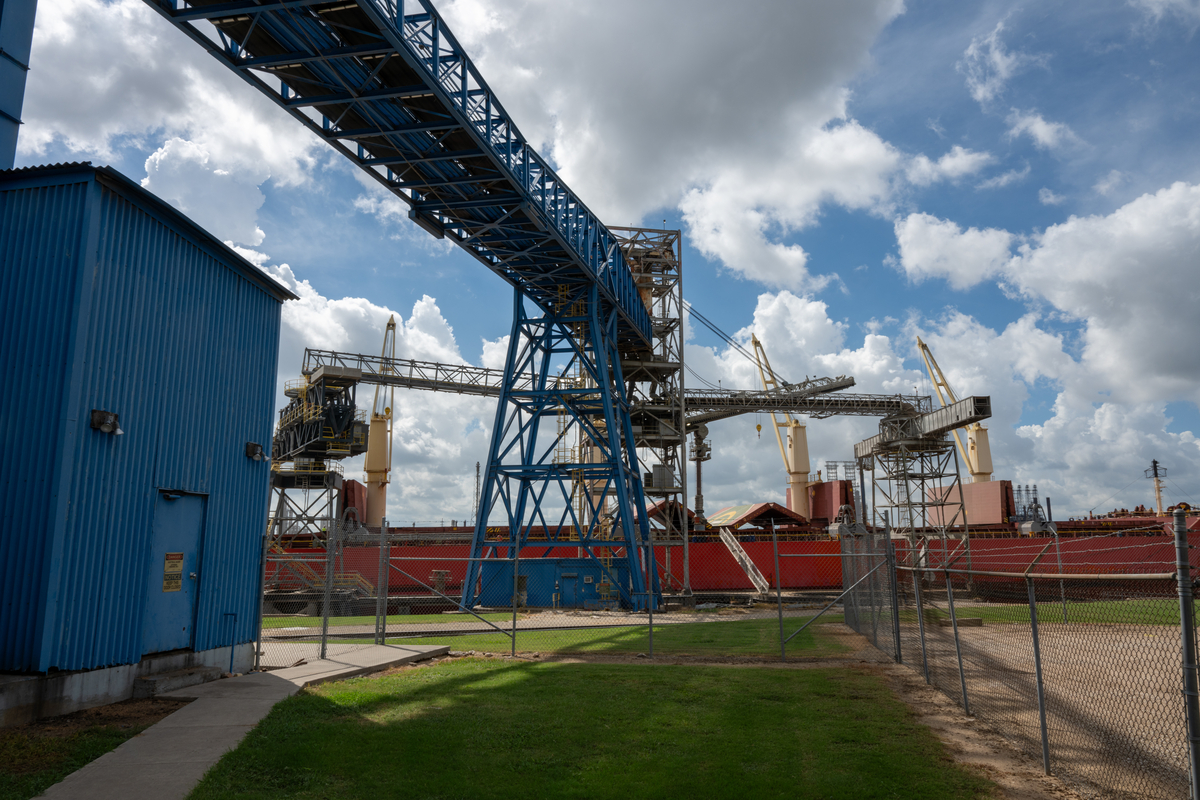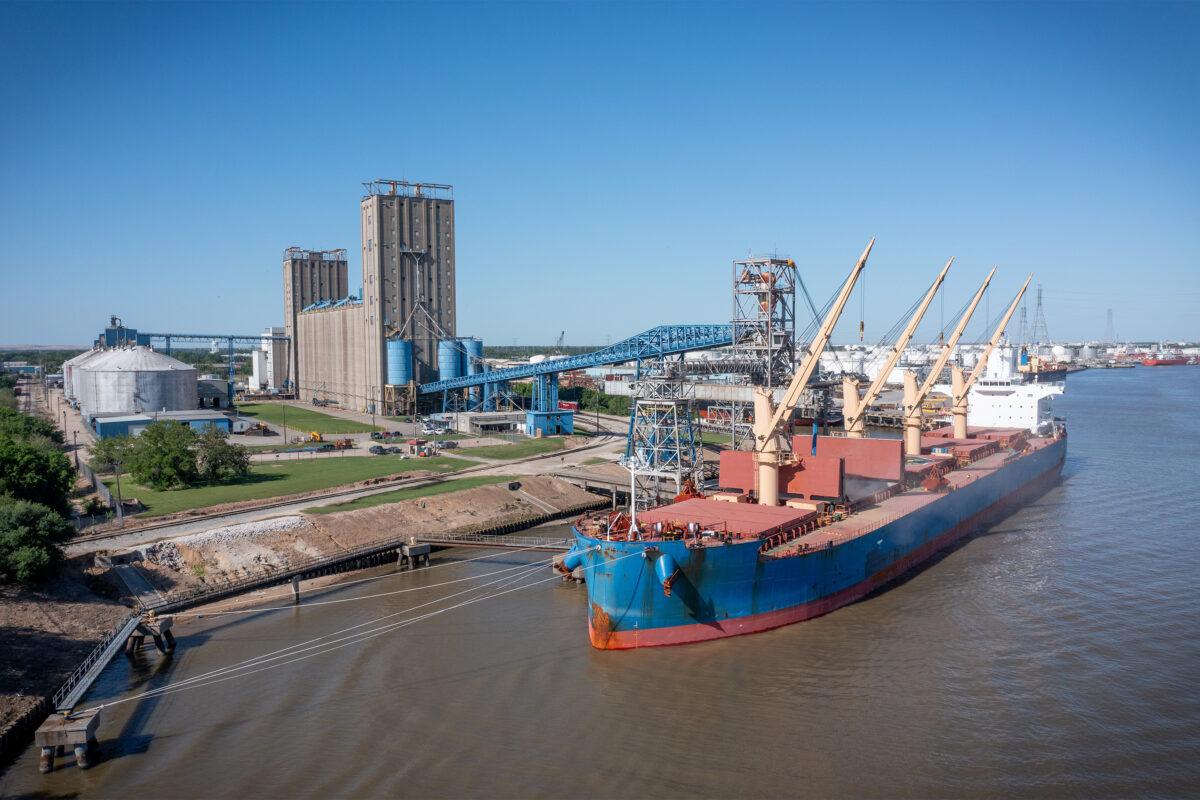Measuring Beyond the Bushel

Helping farmers know more about their soybeans can help them capture more value
Farmers often look to yield first. But the future of profitability lies in meeting end-user composition needs. To this end, the checkoff is constantly working to increase U.S. soy’s opportunities with end users. Through research, innovation and measurement, we’re improving U.S. soybeans to meet end users’ needs – from animal ag to the food industry to industrial uses.
In 1960, Theodore Levitt, an American economist and professor, said that the railroad industry was failing “because those behind it assumed they were in the railroad business rather than the transportation business.”
The soybean industry is in no way failing. But the railroad example can serve as a cautionary tale to those who don’t expand their market view beyond their own product. The soy checkoff is making sure U.S. soybeans aren’t left in the dust.
U.S. soybean farmers aren’t in the soybean business – or even the farming business. They’re in the animal feed business and the commercial baking business and the consumer goods business. So it’s important to encourage them to think beyond your field and consider your end-users’ needs.
End users don’t need soybeans. They need the protein and oil that come from soybeans.
Take the No. 1 customer of soybean meal, animal agriculture, as an example.
“We buy soybean meal for its protein content and great balance of amino acids,” says Roy Brister, Ph.D., director of nutrition and feed milling at Tyson Foods.
But protein and amino acids can come from sources other than U.S. soybeans.
“We’re faced with a number of competitors, domestically and abroad, that can supply these products,” says Dan Corcoran, a soy checkoff farmer-leader from Ohio. “South America has grown substantially as a global supplier of soybeans. Plus, synthetic amino acids can replace essential amino acids, which opens the door to other protein source options.”
With our exceptional composition, sustainability and available supply, U.S. soy is already a leader in global markets. Now’s the time to defend the castle. Now’s the time to rise up to global demands and show the true value of U.S. soybean meal.
But how can we get end users to see that value? How do we give them one more reason to choose U.S. soy?
Using data to make a difference
Just as DNA technology changed the criminal justice system, NIR technology can change the soybean industry by showing beyond a reasonable doubt that U.S. soybean meal can provide the value end users desire.
Almost like scanning a barcode, near-infrared, or NIR, technology measures soybean protein and oil content quickly and accurately.
“NIR is fast, well-established technology,” says Brister. “And having data on soy protein and oil content spreads the general awareness of the components that hold value for end users.”
That transparency is powerful all along the value chain. Not only does it show how U.S. soybean farmers are meeting end-user needs now, but it serves as a guide to how they can continue meeting their needs in the future.
“No matter the product, there’s always room for improvement,” says Brister. “For us, more protein and more energy would make soybean meal more valuable as a feed ingredient.”
But what does “more” mean? Without a baseline, promising “more” is no different than those toothpaste commercials promising 30 percent whiter teeth.
That’s where NIR technology comes in. By testing for protein and energy, we can determine those areas that can be impacted in order to meet end-users’ evolving needs.
“If you can measure the components that make up soybean meal quality, like protein and amino acids, you can set the basis for improvement,” says Bruce Weber, director of soybean risk management at CHS, Inc.
Until that basis is known and shared with the entire value chain, how will farmers and seed companies know what needs improving? Farmers can collect data on the farm, but unless they take it out of their filing cabinet and put it to use when making decisions, they won’t see a difference on your operation.
The same concept applies here.
We know the technology exists, and we know what it can measure. What’s needed now is increased transparency all along the value chain. And the soy checkoff is helping to increase transparency – and start a conversation – across the soy value chain.
“Unfortunately, value chain members often work independently,” says Corcoran. “We need to work together and support not only greater use of NIR measurement technology but also a system that then shares that measurement data with the entire chain.”
This level of transparency moves the industry toward the checkoff’s long-term goal of creating a market system that looks beyond yield and rewards on constituent value.
Selling Soy’s Nutritional Bundle
Soybean meal is a top feed ingredient for animal agriculture because it meets their needs for consistent, high-quality protein and other nutrients. Every part of the soy value chain, including farmers growing soybeans and processors crushing beans for meal and oil, is responsible for ensuring that U.S. soy continues to provide the right balance of nutrients for customers.
Mark Sandeen, vice president of processing marketing at Ag Processing, Inc. (AGP), says his customers are looking for a commodity soybean meal – so they purchase and process commodity soybeans to meet that need. A small percentage of customers ask for particular specifications, and in those cases , they find the soybeans that meet those requirements.
“We’ve worked on sustainability and high oleic oil programs for some customers based on their needs,” he says. “End users have be willing to pay enough to make going out to procure the beans worth it for us.”
Sandeen says that AGP takes great measures to maintain soybean quality.
“We measure protein and oil when we take deliveries from elevators and share that information with the elevator and the producers,” he explains. “Then the elevator is paid based on protein and oil content. It’s up to the elevator whether they pass that on to their farmers.”
Most elevators do not test for protein and oil content. The machines aren’t cheap. Many elevator companies have several locations, and putting a machine at every location is very expensive. However, if a farmer is delivering to a processor like AGP that pays premiums based on quality, it can be beneficial.
Like the soy checkoff, Sandeen says AGP hopes producers will use protein and oil data in seed selections in the future. “It wasn’t too long ago that you’d look at a seed catalog and not see protein and oil content as a factor,” Sandeen recalls. “Today, I think those metrics are pretty commonplace, so farmers can choose varieties that meet their performance expectations and also provide better protein and oil content for customers.”
For processors like AGP, measuring component value increases profit opportunities from soy’s nutritional bundle. For farmers, tracking quality over time could lead to higher profits – whether that’s with premiums or increased demand. When it comes to quality, the soy checkoff is communicating to farmers that what’s inside the bean matters. Yield, or quantity, is no longer enough – the soy checkoff is encouraging soybean farmers to strive for optimum quality, in the form of protein, oil and amino acid content.
The Race to Meeting Customer Demand, Maximizing Profitability
The U.S. soybean industry is in the pole position when it comes to meeting customer demand. Domestic and international soybean customers continue to make U.S. soy their preferred source. This leadership comes from a track record of delivering the exceptional composition, consistent supply, sustainability and innovation – the U.S. Soy Advantage – that customers have come to expect.
While these qualities remain the foundation for success, staying ahead of the pack will require an even greater focus on anticipating and meeting market needs. And as customers demand higher quality meal and oil, the checkoff and its newly implemented Long-Range Strategic Plan provide the roadmap to meet these demands and ensure there is a strong market for your crops in the future.
Lessons Learned From Pork. The Other White Meat®
This intense focus on anticipating and meeting customer needs is nothing new to farmers and the ag industry. Take the pork industry, for example. When customers demanded leaner meat in the 1990s, the industry responded by changing the way it raised and marketed pigs to meet that demand.
Bill Even, National Pork Board CEO, says that while the change didn’t happen overnight, the shift from live-weight pricing to lean-yield pricing has benefited U.S. pork producers and its customers.
“Packing plants realized they could deliver more value from lean pork, and they added technology to measure the leanness. Then they adapted pricing grids to pay farmers for lean pigs,” says Even. “Producers quickly realized that lean pigs were more efficient than fat pigs.”
For the pork industry, the shift from live-weight pricing to yield and grade pricing based on the quality of the pork delivered led to improved genetics, nutrition and management practices throughout the supply chain.
“The pigs raised today are better than those raised a generation or two ago,” says Even. “The private sector actively innovated and found new ways to breed and raise pigs to better meet customer needs. That innovation has led to today’s robust pork industry, including record pork exports.”
Even says that while this approach has been widely successful, the pork industry continues to innovate and change the way it approaches the market to meet the needs of consumers and deliver more value to producers.
Meeting End-Use Demand for Soy
So how can this example translate to the U.S. soybean industry?
The checkoff is leading efforts with the rest of the soy value chain to explore options to better meet customer demands for higher quality meal and oil. This could include implementing tools to better measure the oil and meal quantity and quality, and compensating farmers based on the value they deliver.
Realizing any potential changes to the way soybeans are grown and marketed may seem like a long race, but the U.S. soybean industry, with support and leadership from the soy checkoff, will no doubt lead the way to the finish line.
With technology that measures the composition of soybeans constantly improving, the potential for soybeans – or more correctly, soybean meal and oil – is endless. The checkoff is helping farmers measure the makeup of their beans to show end users how it meets their needs.



